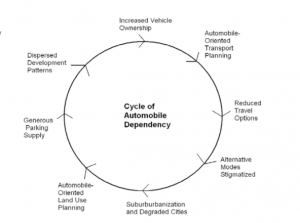On February 25, the NEOSCC Board will be voting on the the Vibrant NEO 2040 Vision, Framework and Action Products. With just under 40 days to the vote and 41 initiatives in the vision, we thought it would be good to create a countdown to the vote. Everyday over the next 5 weeks, we will be sharing an “Initiative A Day” with you so you can gent a better understanding of the vision and framework! If you would like to read all of the Initiatives, you can download them here Vibrant NEO_Recs&Init_010114.
Show your support for Vibrant NEO 2040 by adding your name to our Champions of Vibrant NEO 2040 list here!
These recommendations, initiatives, and products, are not one-size-fits all and some aspects of the initiatives won’t be applicable everywhere in the 12-county region. The Vibrant NEO 2040 Vision, Framework and Products are intended inspire and guide decision-making at the Metropolitan Planning Organization (MPO), Council of Government, and local levels to ensure that land use, transportation, and environmental considerations are simultaneously addressed by their processes. Ultimately, the implementation of Vibrant NEO 2040 is up to Northeast Ohio’s communities and residents. But regardless of the applicability of each initiative to any particular part of the region, the goal for each community within the Vision is the same: stability, prosperity, and a high quality of life for all of its residents.
Recommendation 2: Develop a robust network of regional job centers connected by multimodal transportation corridors within and between counties
Initiative 2.3: Implement a tiered approach to local parking requirements.
WHAT THIS MEANS. Parking is a fundamental need in modern urban areas, but when oversupplied, it can easily overwhelm the special qualities of a place and even have adverse economic impacts. The provision and management of parking play an enormous role in the look and feel of streets, travel choice, and congestion levels. Parking spaces are a valuable commodity; like any commodity, they are subject to the laws of supply and demand. Typically, however, parking has been supplied without much thought to actual travel demand — or demand for any form of parking other than free parking — resulting in swathes of real estate being reduced to asphalt that sits largely empty for much of the day.

Typical parking requirements in the United States today are a result of a virtuous circle of good intentions gone wrong. At its center area series of zoning code practices that have had unintended negative impacts on city centers. Conventional zoning codes, emerging in the early 20th century, quickly evolved beyond an idea with unquestionable merit — keeping noxious land uses away from residences — to so strictly isolate residential, industrial, and commercial land uses that it made motorized travel a near-necessity for most trips. Parking requirements were then added to address the spike in driving that these new standards created and ensure that parking demand for retail businesses, places of employment and other major destinations did not ‘spill over’ into residential neighborhoods and exhaust much-needed on-street parking supply. The minimum parking requirements in many zoning codes are based on the maximum demand observed on any day, so that the actual parking supply provided is never filled and most days provides much more than is needed.
WHY THIS IS IMPORTANT. Parking management strategies that focus on reducing the minimum required parking introduce a greater range of choice in communities—both to development markets that may be able to realize lower costs by providing less parking in places where it is not in heavy demand, and also to businesses and residents interested in finding the lower-cost space and housing that could result.
Reducing or eliminating minimum parking requirements selectively would also allow development to better respond to true market demand and, in places where less parking is actually needed than what zoning-based parking minimums specify, to provide that amount and thus reduce development costs.
GETTING IT DONE. As a form of land use regulation, parking policies are a powerful regulatory tool that local jurisdictions hold in influencing development. Northeast Ohio municipalities should consider adopting a tiered approach to parking regulation that is more responsive to the complete picture of mobility options and their accessibility. This would suggest:
- Implementing parking maximums in walkable districts with high-frequency transit running throughout the day, i.e. districts that have 10-minute or better frequencies of bus and/or rail service;
- Removing all reference to maximums or minimums in walkable districts with significant transit service;
- Relaxing parking minimums in areas with some transit service; and
- Retaining existing parking minimum requirements in areas without transit service, or modestly adjusting parking minimum requirements based on observed demand.
TOOL: The City of Cleveland passed a zoning overlay district created to preserve the pedestrian-oriented character of their unique shopping districts, accomplished through regulatory tools addressing building placement, use, reduced parking requirements, etc. (see Chapter 343.33). http://planning.city.cleveland.oh.us/cpc.html
http://www.amlegal.com/library/oh/cleveland.shtml (Cleveland Ohio, Code of Ordinances; see Chapter 343.23)
Lead |
Municipalities, Townships; Metropolitan Planning Organizations |
Target Community |
Strategic investment areas, asset risk areas, cost risk areas |
Implementation Complexity |
Moderate |
